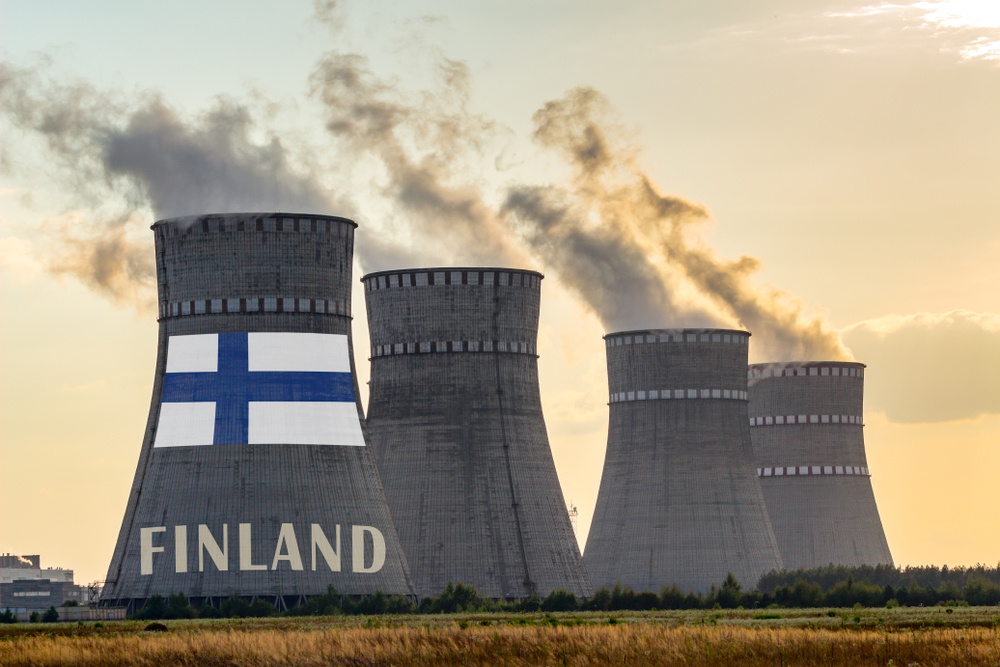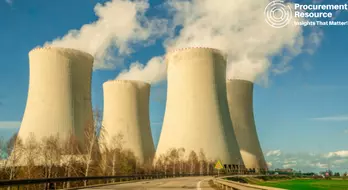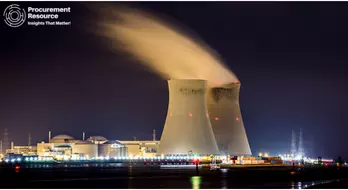Product
Nuclear Energy Trend
Nuclear Energy Trend
Nuclear Energy Regional Price Overview
Get the latest insights on price movement and trend analysis of Nuclear Energy in different regions across the world (Asia, Europe, North America, Latin America, and the Middle East & Africa).
Nuclear Energy Trend for the First Half of 2024
The price of uranium experienced a significant surge, reaching levels not seen in over a decade and a half, primarily driven by increased demand from the nuclear energy sector and a tightening supply chain. This upward trend was fueled by a renewed global focus on nuclear energy as a reliable, low-carbon power source amid efforts to meet ambitious net-zero targets. The countries such as the UK, France, China, and many others have either reversed plan to reduce nuclear energy reliance or have embarked on new initiatives to expand nuclear capacity, creating heightened demand for uranium.
Nuclear Energy Chart

Please Login or Subscribe to Access the Nuclear Energy Chart Data
Meanwhile, supply constraints have intensified due to several factors, including a lack of new mining investments over the past years, declining inventories among major producers, and production disruptions caused by raw material shortages and geopolitical tensions. Additionally, the growing interest from investment funds holding physical uranium for speculative purposes has effectively removed more uranium from the market, exacerbating the supply-demand imbalance. This resulted in an environment of scarcity where utility managers, compelled to maintain continuous operations of nuclear plants, face high procurement costs despite uranium being a small component of overall operational expenses.
Moreover, the challenge extended beyond uranium ore, with enriched uranium – a critical input for nuclear reactors – facing even tighter supply conditions, partly due to significant global enrichment capacity concentrated in politically sensitive regions like Russia. As the price of uranium continues to rise, utilities are in direct competition with investment funds and governments to secure limited supplies, indicating that the current price rally is still in its early stages.
The persistence of these conditions suggests that the cost of uranium and, by extension, nuclear energy is likely to remain elevated for the foreseeable future, barring any unforeseen technological advancements or major market disruptions. Consequently, the equities in the uranium sector have seen robust performances, with further potential gains as the market navigates through supply constraints and escalating demand pressures.
Analyst Insight
According to procurement resources, the price of Nuclear Energy is thus expected to continue its northward trajectory with ample of demand from the downstream industries and scarce production rates due to limited availability of resources.
Nuclear Energy Trend for the Second Half of 2023
The rising need for low-carbon energy sources is driven by environmental concerns, which makes nuclear power a desirable alternative. The rise of nuclear energy's domestic production in several parts of the globe is further reinforced by energy security issues, particularly in places that depend on imported fossil fuels. Additionally, improvements in efficiency and safety brought about by technological progress also support market expansion and help drive the market trend of nuclear energy upwards.
The French government and EDF have reached a complex agreement to cap the price of nuclear energy, with profits from sales to be returned to consumers if prices exceed set thresholds. The deal aims to shield consumers and businesses from price spikes while ensuring EDF secures funds for future nuclear reactor projects.
An average reference price of €70/MWh has been established, with the state taxing EDF's revenues if energy prices surpass certain levels. The goal is to maintain nuclear power prices near €70/MWh over 15 years. This framework replaces the existing Arenh agreement and will only be implemented in 2026, but the ripples in the market dynamics were evident in the last two quarters of 2023.
Analyst Insight
According to Procurement Resource, the price of nuclear energy is expected to be driven by the rise in demand for fossil fuel alternatives to a certain limit only as various economies might start capping the upper limit of nuclear energy prices.
Nuclear Energy Trend for the First Half of 2023
Nuclear energy prices were mostly stable during the first half of the year 2023. Several factors shouldered the nuclear energy price trends. Among all the renewable energy sources like wind, water, etc., nuclear power plants are the most expensive to set up, with strict safety adherence required in operation. However, its reliability and efficiency make it a lucrative option.
The rapid urge to decarbonize the energy sector by reducing fossil fuel dependence pushed nations towards exploring nuclear options. The war between Russia and Ukraine also taught how oil and gas can be used as pressure-building measures during such times. And with the increasing efficiency of storage batteries, the power storage costs have plummeted over time. All these factors contributed to a steady run for nuclear energy in the first half of the year 2023.
Analyst Insight
According to Procurement Resource, with 22 Nuclear power plants under construction in China the Nuclear Energy penetration in the power sector is set to rise. The market is bound to grow further with actively increasing dependence on the power sector.
Nuclear Energy Trend for the Second Half of 2022
Outlook towards nuclear energy was still uncertain because of the risks and measures associated with the production facilities, but the havoc caused by the Russia-Ukraine war which abruptly ended the energy supplies pushed countries towards rethinking their nuclear policies. Electricity bills soared across the globe, especially in Europe. The third quarter of the year was particularly difficult with record hikes in energy prices.
In countermeasures the inflation reduction act passed in the US parliament in August 2022, supported the movement towards cleaner fuels, supporting nuclear energy initiatives by countries like South Korea. A total of 10% of electricity in 2022 came from nuclear energy sources. The USA changed its domestic policies to support lifetime extensions for ageing nuclear plants. Japan also approved restarting its nuclear plants. Hence, all these factors positively contributed towards the price trend of nuclear energy.
Analyst Insight
According to Procurement Resource, the nuclear energy sector is expected to grow further in the coming years. As the world moves towards renewables, nuclear energy has its strong footing, which is only projected to rise further, thereby impacting the prices.
Nuclear Energy Trend For the First Half of 2022
Nuclear power remains an expensive, conflict-prone, and hazardous form of energy that still doesn’t fit in the classic system of renewables. However, the soaring fuel prices and need for clean energy have caused governments around the world to look at nuclear energy programs in a new light.
The global energy supply crunch caused by the Russian limiting its supply to Europe, unprecedented crude oil prices, port congestions and export restrictions have caused the price trend for nuclear energy to swell.
The prices in the market inclined due to the constant threat and safety issues at the Russian-occupied Zaporizhzhia nuclear plant and around 32 reactors in France were shut down due to corrosion issues. Hence, these supply shortages reverberated throughout the world. The trade disruptions caused the costs of material, activity, and engineering to rise, thereby causing the price of nuclear energy to the expensive side.
Procurement Resource provides latest prices of Nuclear Energy. Each price database is tied to a user-friendly graphing tool dating back to 2014, which provides a range of functionalities: configuration of price series over user defined time period; comparison of product movements across countries; customisation of price currencies and unit; extraction of price data as excel files to be used offline.
About Nuclear Energy
Nuclear energy refers to the utilisation of nuclear reactions that release nuclear energy to generate heat. Heat generated in the process is further utilised in steam turbines in order to generate electricity in a nuclear power plant. Presently, most of the electricity from nuclear power is generated by nuclear fission of uranium and plutonium.
Nuclear Energy Product Details
| Report Features | Details |
| Product Name | Nuclear Energy |
| Synonyms | Nuclear Power |
| Industrial Uses | Radioactive fuel, Powerplants, Generating electricity |
| Supplier Database | The Hanbit Nuclear Power Plant, Bruce Power, Zaporizhzhya Nuclear power plant, Korea Hydro & Nuclear Power Co. Ltd (KHNP) |
| Region/Countries Covered | Asia Pacific: China, India, Indonesia, Pakistan, Bangladesh, Japan, Philippines, Vietnam, Iran, Thailand, South Korea, Iraq, Saudi Arabia, Malaysia, Nepal, Taiwan, Sri Lanka, UAE, Israel, Hongkong, Singapore, Oman, Kuwait, Qatar, Australia, and New Zealand Europe: Germany, France, United Kingdom, Italy, Spain, Russia, Turkey, Netherlands, Poland, Sweden, Belgium, Austria, Ireland Switzerland, Norway, Denmark, Romania, Finland, Czech Republic, Portugal and Greece North America: United States and Canada Latin America: Brazil, Mexico, Argentina, Columbia, Chile, Ecuador, and Peru Africa: South Africa, Nigeria, Egypt, Algeria, Morocco |
| Currency | US$ (Data can also be provided in local currency) |
| Supplier Database Availability | Yes |
| Customization Scope | The report can be customized as per the requirements of the customer |
| Post-Sale Analyst Support | 360-degree analyst support after report delivery |
Note: Our supplier search experts can assist your procurement teams in compiling and validating a list of suppliers indicating they have products, services, and capabilities that meet your company's needs.
Nuclear Energy Production Process
- Production of Nuclear Energy via Fission of Uranium and Plutonium
Nuclear energy originates from the splitting of uranium atoms. This process is widely known as nuclear fission. This generates heat to produce steam, that is utilised by a turbine generator to generate electricity.
Methodology
The displayed pricing data is derived through weighted average purchase price, including contract and spot transactions at the specified locations unless otherwise stated. The information provided comes from the compilation and processing of commercial data officially reported for each nation (i.e. government agencies, external trade bodies, and industry publications).
Assistance from Experts
Procurement Resource is a one-stop solution for businesses aiming at the best industry insights and market evaluation in the arena of procurement. Our team of market leaders covers all the facets of procurement strategies with its holistic industry reports, extensive production cost and pre-feasibility insights, and price trends dynamics impacting the cost trajectories of the plethora of products encompassing various industries. With the best analysis of the market trends and comprehensive consulting in light of the best strategic footstep, Procurement Resource got all that it takes.
Client's Satisfaction
Procurement Resource has made a mark for itself in terms of its rigorous assistance to its clientele. Our experienced panel of experts leave no stone unturned in ensuring the expertise at every step of our clients' strategic procurement journey. Our prompt assistance, prudential analysis, and pragmatic tactics considering the best procurement move for industries are all that sets us apart. We at Procurement Resource value our clients, which our clients vouch for.
Assured Quality
Expertise, judiciousness, and expedience are the crucial aspects of our modus operandi at Procurement Resource. Quality is non-negotiable, and we don't compromise on that. Our best-in-class solutions, elaborative consulting substantiated by exhaustive evaluation, and fool-proof reports have led us to come this far, making us the ‘numero uno' in the domain of procurement. Be it exclusive qualitative research or assiduous quantitative research methodologies, our high quality of work is what our clients swear by.
Related News
Table Of Contents
Our Clients

Get in Touch With Us

UNITED STATES
Phone:+1 307 363 1045

INDIA
Phone: +91 8850629517

UNITED KINGDOM
Phone: +44 7537 171117
Email: sales@procurementresource.com





